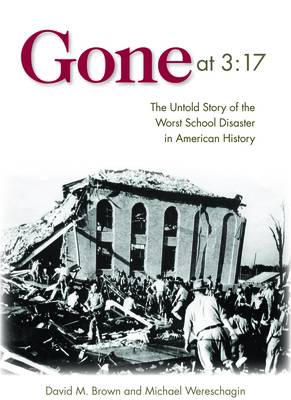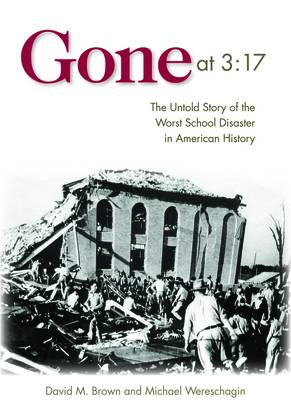
- Afhalen na 1 uur in een winkel met voorraad
- Gratis thuislevering in België vanaf € 30
- Ruim aanbod met 7 miljoen producten
- Afhalen na 1 uur in een winkel met voorraad
- Gratis thuislevering in België vanaf € 30
- Ruim aanbod met 7 miljoen producten
Gone at 3:17
The Untold Story of the Worst School Disaster in American History
David M Brown, Michael Wereschagin
Hardcover | Engels
€ 48,45
+ 96 punten
Omschrijving
At 3:17 p.m. on March 18, 1937, a natural gas leak beneath the London Junior-Senior High School in the oil boomtown of New London, Texas, created a lethal mixture of gas and oxygen in the school's basement. The odorless, colorless gas went undetected until the flip of an electrical switch triggered a colossal blast. The two-story school, one of the nation's most modern, disintegrated, burying everyone under a vast pile of rubble and debris. More than 300 students and teachers were killed, and hundreds more were injured. As the seventy-fifth anniversary of the catastrophe approaches, it remains the deadliest school disaster in U.S. history. Few, however, know of this historic tragedy, and no book, until now, has chronicled the explosion, its cause, its victims, and the aftermath. Gone at 3:17 is a true story of what can happen when school officials make bad decisions. To save money on heating the school building, the trustees had authorized workers to tap into a pipeline carrying "waste" natural gas produced by a gasoline refinery. The explosion led to laws that now require gas companies to add the familiar pungent odor. The knowledge that the tragedy could have been prevented added immeasurably to the heartbreak experienced by the survivors and the victims' families. The town would never be the same. Using interviews, testimony from survivors, and archival newspaper files, Gone at 3:17 puts readers inside the shop class to witness the spark that ignited the gas. Many of those interviewed during twenty years of research are no longer living, but their acts of heroism and stories of survival live on in this meticulously documented and extensively illustrated book.
Specificaties
Betrokkenen
- Auteur(s):
- Uitgeverij:
Inhoud
- Aantal bladzijden:
- 328
- Taal:
- Engels
Eigenschappen
- Productcode (EAN):
- 9781612341538
- Verschijningsdatum:
- 1/01/2012
- Uitvoering:
- Hardcover
- Formaat:
- Ongenaaid / garenloos gebonden
- Afmetingen:
- 160 mm x 229 mm
- Gewicht:
- 635 g

Alleen bij Standaard Boekhandel
+ 96 punten op je klantenkaart van Standaard Boekhandel
Beoordelingen
We publiceren alleen reviews die voldoen aan de voorwaarden voor reviews. Bekijk onze voorwaarden voor reviews.









